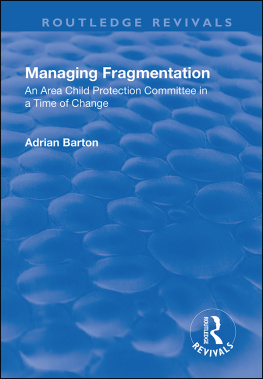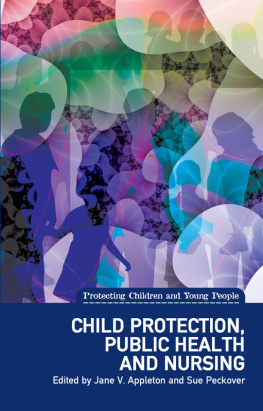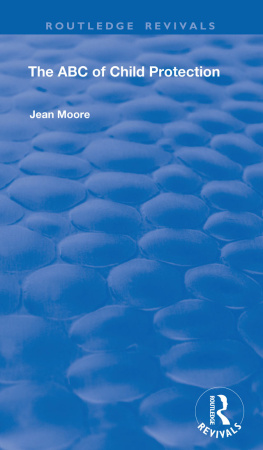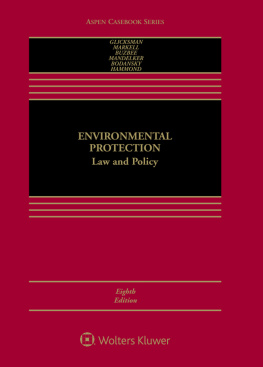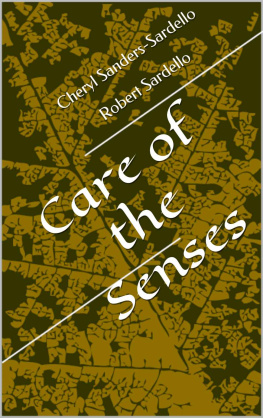AREA CHILD PROTECTION COMMITTEES
To Sue, Tecka and Feni, and to Natasha, Huw and Gwyn
First published 1997 by Ashgate Publishing
Reissued 2018 by Routledge
2 Park Square, Milton Park, Abingdon, Oxon, OX14 4RN
711 Third Avenue, New York, NY 10017, USA
Routledge is an imprint of the Taylor & Francis Group, an informa business
Copyright Robert Sanders and Nigel Thomas 1997
All rights reserved. No part of this book may be reprinted or reproduced or utilised in any form or by any electronic, mechanical, or other means, now known or hereafter invented, including photocopying and recording, or in any information storage or retrieval system, without permission in writing from the publishers.
Notice:
Product or corporate names may be trademarks or registered trademarks, and are used only for identification and explanation without intent to infringe.
Publishers Note
The publisher has gone to great lengths to ensure the quality of this reprint but points out that some imperfections in the original copies may be apparent.
Disclaimer
The publisher has made every effort to trace copyright holders and welcomes correspondence from those they have been unable to contact.
A Library of Congress record exists under LC control number: 97073609
ISBN 13: 978-1-138-60954-9 (hbk)
ISBN 13: 978-0-429-46334-1 (ebk)
We would like to express our gratitude to Lawrence Conway at the Welsh Office for giving us the opportunity to be involved in the two studies which are featured in this book. We want to acknowledge as well the time and good will which was extended to us by all of those members and chairs of Area Child Protection Committees who helped us along the road to a better understanding of ACPCs. Diolch yn fawr i bawb. Above all we would like to acknowledge our indebtedness to Professor Sonia Jackson, who was the lead author of Protecting Children in Wales and who has helped us enormously with this book.
Although forms of concern about cruelty to children have a longer history, child abuse as a central focus of child welfare services is very strikingly a phenomenon of the last thirty years. During that time it has gone from the discovery of baby-battering to the contemporary preoccupation with sexual abuse in its various manifestations, and the professional energy, heartache and sheer resources expended on it have expanded at a rate that at times seems exponential. In most economically modernised countries child protection is now the predominant concern of the organisations providing welfare services to children and families.
Although a similar process has taken place all over the world, different countries and continents have each had their own distinctive emphasis. To some extent these variations probably reflect different patterns of abuse and different attitudes to children; but they also reflect widely differing styles of professional intervention, and widely differing views of the relationship between families and the state. The pattern in most of the English-speaking world has been to adopt to varying extents a policing response, as opposed to the predominantly therapeutic response seen in some European countries. It has also been to lay great stress on the importance of professions working together. In some cases, for instance in the United States, this has included mandatory reporting of suspicions of abuse.
The United Kingdom has not adopted mandatory reporting, at least in legal terms. What it has done, uniquely as far as we know, is to regulate quite formally the arrangements for inter-professional collaboration in response to child abuse or allegations of child abuse. Since the early 1970s agencies concerned with the health, welfare education and protection of children have been directed by central government to establish formal arrangements for regular interagency collaboration at both practitioner and managerial levels. The detail with which this has been specified has tended to increase in the intervening years, as procedures have been tightened in response to incidents and scandals. We summarise this history later in this chapter. However, our principal concern in this book is to examine how Area Child Protection Committees, as they have been known for ten years now, currently operate and to reach some estimation of their effectiveness.
Since this approach to protecting children has been in a sense an experiment with the United Kingdom as the laboratory, we hope that readers in other countries will be interested in its results. We do not claim that ours is the last word on the successes or failures (for we think there are both in good measure) of the experiment. It would be fairer to say that it is the first; for surprisingly little has been written about this peculiarly British approach to the problem of ensuring that diverse professions work together to protect children.
Purposes of this book
When one considers the wealth of literature that has accumulated in the general field of child abuse and child protection, it is startling that so little has been written specifically about the structures for managing services to protect children. Apart from the recent work of Christine Hallett and Elizabeth Birchall (Hallett and Birchall, 1992; Hallett, 1993; Birchall and Hallett, 1995; Hallett, 1995) there is very little published material. Indeed, to achieve their excellent review of the literature on coordination and child protection, Hallet and Birchall (1992) had to draw extensively on evidence of interagency coordination from other settings. This lack of emphasis in the literature on interagency working in child protection is all the more surprising if one considers the extent to which the changes in child protection, many of which have been initiated as a result of child fatality inquiries, have largely been directed at changing the structures of interagency work and attempting to get agencies to communicate more easily and with less friction. The barriers to agencies working well together have been known for many years (Norton and Rogers, 1981; Broskowski et al, 1982; Hallett and Birchall, 1992).
In Britain, the principal mechanism for ensuring that the management of child protection services is achieved on an interagency basis is through the operation of Area Child Protection Committees (ACPCs). These are multi-agency forums attended by senior managers from a range of organisations involved with children and families. If little has been written about the management of child protection services, even less has been written about Area Child Protection Committees. What literature exists is sometimes based on a misunderstanding of what it is that Area Child Protection Committees actually do; Lyon and de Cruz (1993, p. 147) and Williams (1992) both appear to suggest that the ACPC directs the management of particular cases. In fact the main tasks of the ACPC have been clearly defined in Working Together under the Children Act 1989 (Home Office et al, 1991):
To establish, maintain and review local inter-agency guidelines on procedures to be followed in individual cases;
To monitor the implementation of legal procedures,
To identify significant issues arising from the handling of cases and reports from inquiries;
To scrutinise arrangements to provide treatment, expert advice and inter-agency liaison and make recommendations to the responsible agencies;



